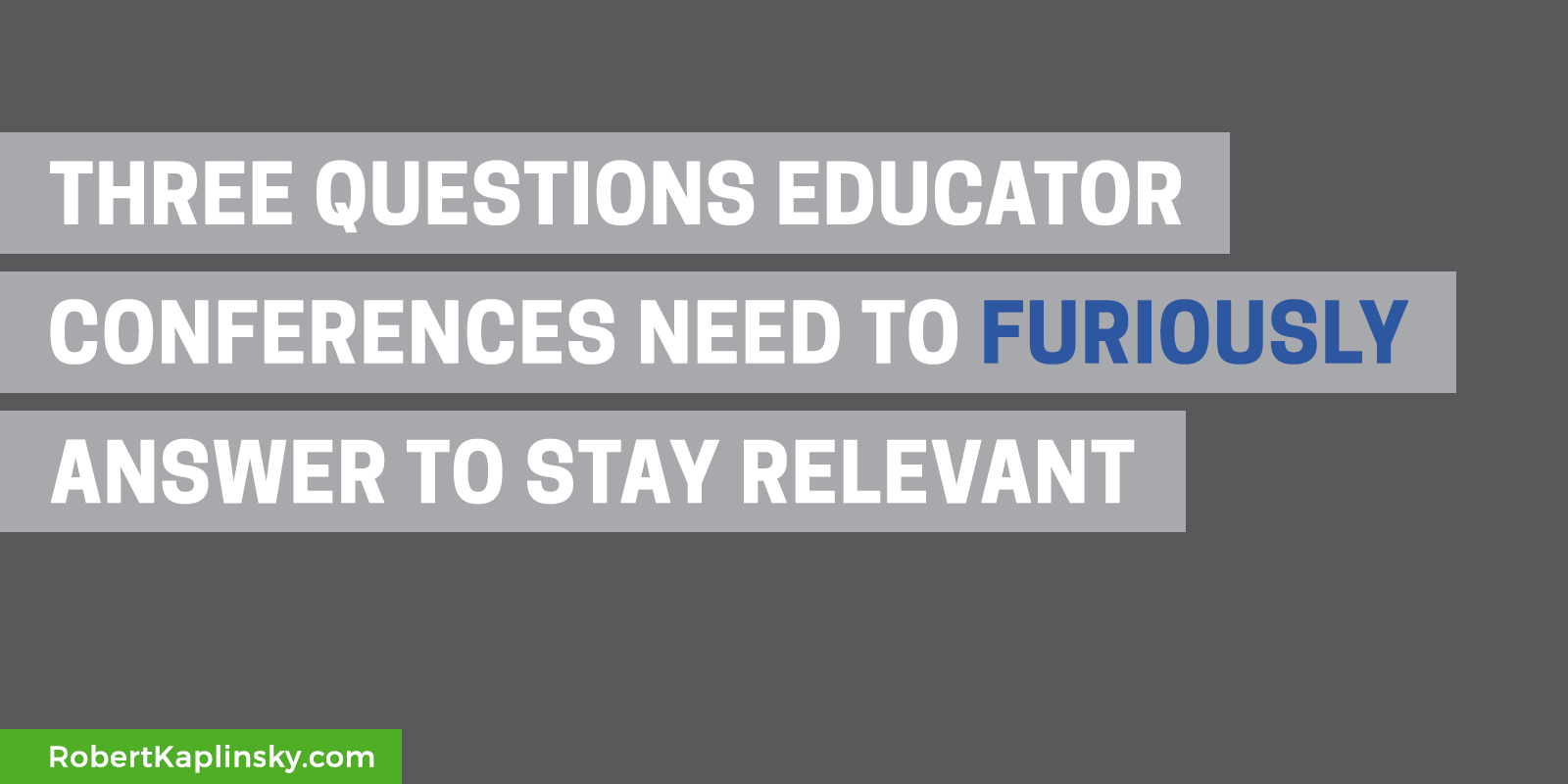Educators keep lamenting how conference attendance is down. This is only partially correct. Attendance is down at some conferences while at the same time, other conferences have thriving attendance numbers. For example, the National Council of Teachers of Mathematics (NCTM) annual conference used to have over 20,000 people. At the latest conference, there were closer to 4,000. At the same time, the latest Get Your Teach On (GYTO) national conference had over 6,500 people.
To better understand this changing dynamic, I attended a GYTO conference earlier this year and wrote about it here. I highly recommend you check it out if you care about making conferences welcoming for all.
My goal for this blog post isn’t to say that one conference is better or worse than another conference. I’m here to say that traditional conferences have been essentially the same for decades. Newer teachers are now choosing conferences using vastly different criteria, and if we don’t adjust to better meet their needs, traditional conferences will fade into irrelevancy.
So, I’m proposing three questions that conference organizers need to furiously work to answer if they want a chance at staying relevant.
It’s important to realize that newer teachers are young Millennials and Gen Z. They are far more likely to be using Instagram and TikTok than Twitter and Facebook. While at the same time, most traditional conference organizations continue to primarily share their content on Twitter and Facebook. It’s also important to know that the kinds of content that people expect and enjoy on each platform are different, so unfortunately it’s a lot more work than simply taking the same content and sharing it on all the platforms.
If your organization isn’t actively working on a strategy to share content that is specifically designed for Instagram and TikTok, you can’t blame newer teachers for not knowing your organization exists.
I do not know the answer to this question, but this thought experiment may help people think past the false dichotomy that conferences can either be good learning experiences or be fun but not both. Why not?
If we listened more to newer teachers’ preferences, we might find ways to make the conference experience more enjoyable while maintaining the high quality content we all love. It doesn’t have to be one or the other. If we continue to ignore this, newer teachers won’t come. The only attendees will be veterans reminiscing about how things used to be.
For example, what if first time attendees got 75% off registration costs, second time attendees got 50% off, and third time attendees got 25% off? I bet we’d see a lot of new faces at these conferences. I would also gladly pay a little bit more get them to attend. In the long run, this would pay for itself if they continued to come and bring their colleagues. Additionally, there are often HUGE amounts of unused seating at conferences, so it may not raise conference costs much.
I am not suggesting that this is the only option, but organizations should be brainstorming creative ways to make their conference more affordable, especially for newer teachers.
Please let me know what you think. What am I right about? What am I missing the point on? What other questions would you add to this list? Please let me know in the comments.


I love conferences! In thinking about ways to involve more people in these amazing opportunities, I see that money isn’t the only limited resource to consider. Time also has a role. Going to conferences is time away from family or from our classrooms. There also seem to be more conferences to choose from, so that means being selective. Which conferences will help me improve my practice, are affordable, and fit into my schedule?
Per my entrance into attending conference, other teachers were instrumental. I attended a local one due to a direct invitation. I attended my first NCTM conference several years after hearing another teacher’s enthusiastic review of one.
I think that many (if not most) teachers find value from attending professional development conferences. So we need to continue to work to find ways to have them better meet their needs, and as you suggested, find ways to get them in the door.